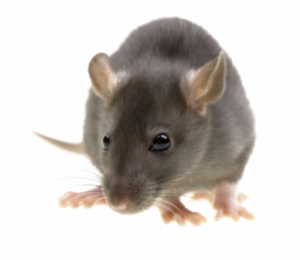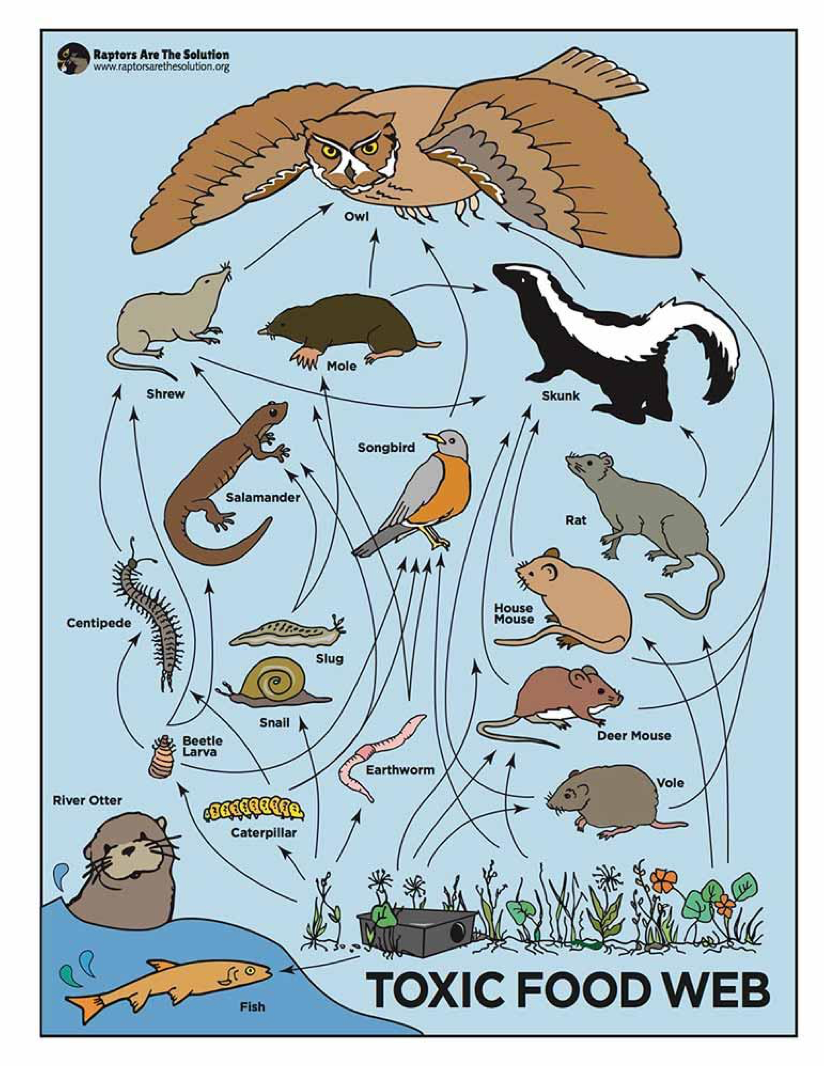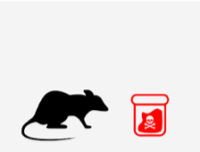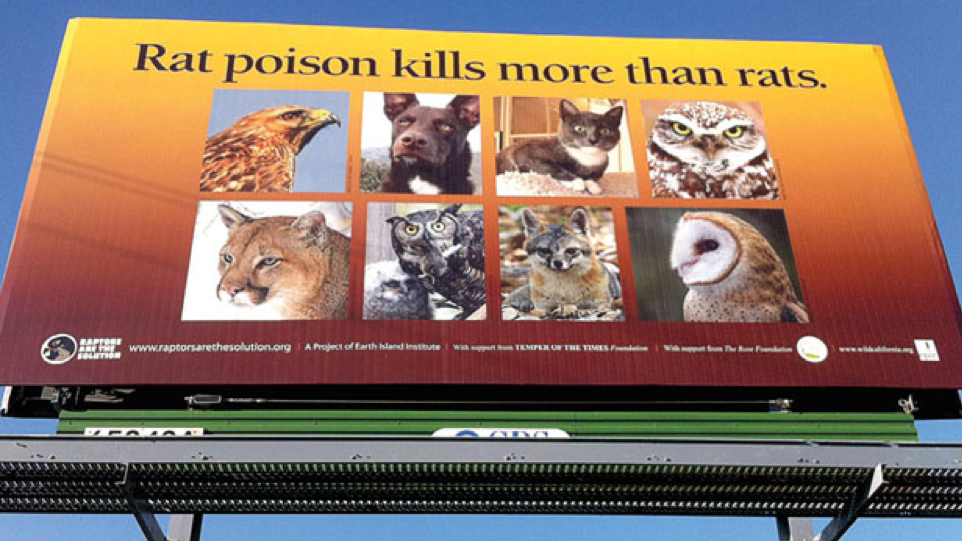 It can surface out of nowhere, the seemingly inevitable need to deal with a dreaded rodent issue in our home or workplace.
It can surface out of nowhere, the seemingly inevitable need to deal with a dreaded rodent issue in our home or workplace.
It’s a reality we’re even a bit resigned to, accepting that, at some point, rodent(s) of some variety will attempt to gain access to food and shelter sources that happen to be ours and we’ll have to figure out how to best deal with said rodents.
Those of us who strive to live in a way that minimally impacts wildlife didn’t sign up for living with this much wildlife, and we get that.
The problem is (and we’ve learned this the hard way): we can’t deal with our wildlife woes by using a slow-acting poison that will effectively spread throughout the ecosystem.
What can we do, then, to best ward off rodents or deal with an infestation in our home?
Is there a sustainable, effective way to avoid rodent issues?
And what does this all have to do with bird conservation?
We at Michigan Audubon want to help you with this quandary, one that we can appreciate, especially as the impacts of rodent control turn out to be a widespread, long term conservation issue, especially when it comes to impacting birds of prey.
When it comes down to it, our wildlife conflicts can usually be traced back to our own behaviors, and our issue with rodents is no different. From leaving food and debris outdoors and available, we encourage them into our quarters. We then compound upon that problem by baiting rodents with rodenticides, creating a domino effect of destructive side effects.
❚ ❚ ❚
Rodenticides are pesticides that kill rodents (not only rats and mice, but also squirrels, woodchucks, chipmunks, porcupines, nutria, and beavers). What makes rodenticide in general so toxic and impactful on an ecosystem has so much to do with the ecological principle of bioaccumulation. Rodents who have consumed poison are deadly to the animals who ingest them, yes, but the impact doesn’t stop there — it continues up the food chain, growing and compounding with added complexity and intensifying impacts on the ecosystem as a whole as it moves through the food chain. They don’t write that on the label.
Caution: lethal side effects may extend to an array of native wildlife
The average consumer may think the mostly-heinous options offered for rodent control at their average hardware stores are perfectly acceptable. These products must be ok, they think… they’re selling it, aren’t they? How bad could it be?
As it turns out, in the case of rodenticides, they are ecosystem-detonating-bad.
Rodenticide kills not only the rodent it intends to kill, but in taking its time to kill the rodent, exposes lethal dose to predators. This one rodent, for example, can live in suffering, staggering around for up to several days, and has the potential to be lethal to not only one but a plethora of other wildlife, from foxes to owls to deer, waterfowl, and coyotes (anything that would eat a rodent). Wolves, weasels, hawks, eagles… you get the picture. This idea is so nicely illustrated by this infographic created by Raptor Are The Solution (RATS):

Domesticated animals, pets, and children aren’t exceptions to the lethal and bioaccumulation-related risks of rodenticides, pesticides, and insecticides in the environment. In fact, there is a history full of public health outcries, wildlife protection lawsuits, and other news related to second-generation anticoagulant rodenticides as well as secondary poisoning from historic rodenticide use in the United States. (You can read more about that part of rodenticides’ history with the EPA here.)
Dealing with Rodents
 When it comes down to what works, prevention really is the best cure. In the spirit of healthy rodent prevention practices, here are some basic steps to ensure limited access for critters — including rodents:
When it comes down to what works, prevention really is the best cure. In the spirit of healthy rodent prevention practices, here are some basic steps to ensure limited access for critters — including rodents:
-
-
-
- Never leave food out (including pet food) where it may be accessible to rodents.
- Keep garbage sealed in critter-proof, tightly-covered containers.
- Remove any potential access rodents may have to food (i.e., bird/animal feed and seed, dog food, garden vegetables, etc.).
- Clean barbeque grill after every use.
- Remove invasive English ivy, especially if rats are an issue. They love to nest in this aggressive invasive, so replacing this with native plants is an all-around win!
- Clean up wood, brush, and junk piles that may provide shelter to rodents.
- Remove tree limbs within three feet from any roofs on the property.
- Seal any holes at the bottom of walls in your home and in any adjacent or nearby structures (i.e., garage, shed, etc.).
- If you keep bird feeders, consider distancing them farther from the building (15-20 feet is ideal). You can also consider going with a lower- or no-mess seed blend. Ask your local bird seed seller for tips if rodents persist to be a concern.
-
-
Animal removal should be utilized as a last resort. Non-chemical removal is important in preventing exposure to non-target wildlife, pets, children, and other humans.
While we’ve made some progress in terms of banning certain products in rodenticides, we still have a long way to go in banning rodenticides!
 It is because of public outcry, environmental protection violations, and documented hazards to wildlife, pets, and children, that the U.S. Environmental Protection Agency is in the process of canceling certain rodenticide products that do not comply with safety requirements (see www.epa.gov/pesticides/mice-and-rats).
It is because of public outcry, environmental protection violations, and documented hazards to wildlife, pets, and children, that the U.S. Environmental Protection Agency is in the process of canceling certain rodenticide products that do not comply with safety requirements (see www.epa.gov/pesticides/mice-and-rats).
Make a commitment to birds, wildlife, and public health today and pledge to never employ the use of rodenticides, glue-based, or “sticky traps” when addressing rodent problems.
- Glue and sticky traps are not only cruel, they can be just as damaging — and lethal — to other wildlife.
- Most wildlife exposed to glue and sticky traps need to be euthanized by a wildlife rehabilitator.
- Poison is not humane, contrary to popular assumption. They don’t “suffer less” after a dose of rodenticide. Tufts Wildlife Clinic points out, “People often believe poisons are more humane than snap traps, but an animal bleeding to death is neither quick nor especially humane.”
The unintended consequences of dealing with our human-made problem are numbered, but we have the facts and the investment in birds and in so much more that we can accept this challenge to pledge to do things differently. We hope you encourage people around you to do the same in refusing to buy products that harm ecosystems that are vital to and for all life.
And hey, if it fits your living situation, consider putting up an owl box to encourage raptors.
We want to encourage the very animals who eat rodents daily, after all!
~ Written by Heather Good
Michigan Audubon Executive Director
Featured Photo: In 2015, the advocacy group Raptors Are The Solution (RATS) launched a campaign using billboards in Northern California and signs in buses and trains in the San Francisco Bay area to make the public aware of the danger these poisons pose to wildlife as well as pets. Photo by Mourad Gabriel.
http://saferodentcontrol.org/site/rodent-control/

